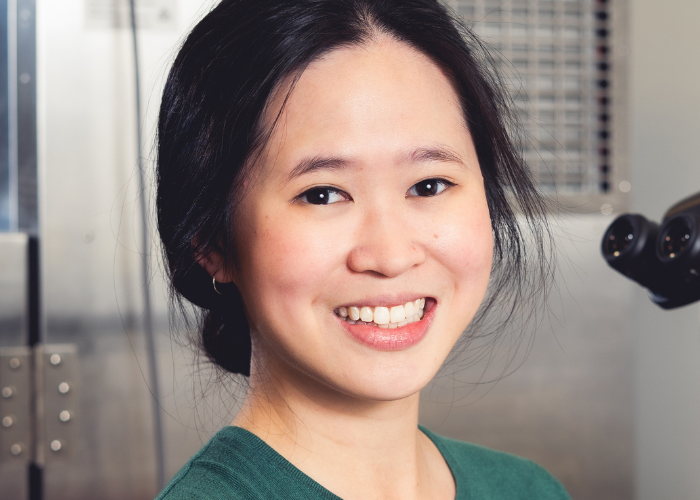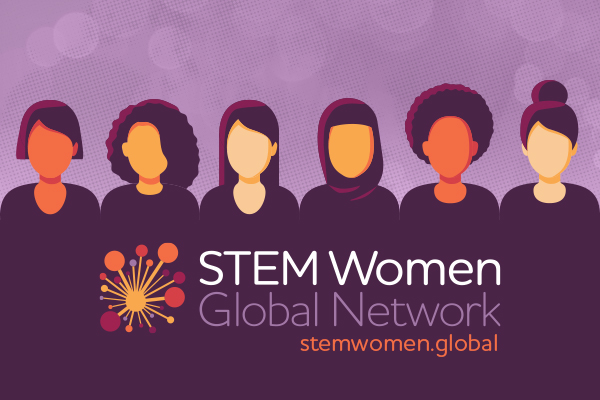In conversation with Dr. Yee Lian Chew

Image credit Jonathan Barge from the Flinders Foundation
Hi Yee Lian - thanks for chatting with us!
What drew you into the world of STEM?
It was not a conscious decision to enter the world of STEM - growing up I didn’t have a very clear idea of what a scientist or engineer did. But what I definitely enjoyed from a young age was trying to find explanations for how things worked in the world around me.
Genetics in particular was something that I found particularly fascinating, mostly because I loved animals and I always asked questions about why zebras had stripes, or why the different ‘cats’ like tigers, lions, cheetahs looked similar but different. Learning about genetics at university really opened my eyes for the first time to how genes control (sometimes a lot, sometimes only a little) how living things look and how they behave.
It became apparent that there were some phenomena that no one could explain to me, because there was no agreed upon explanation for how or why some things took place! This was somewhat amazing to me because it showed that there was so much left to discover. It was this amazement that guided me into the world of STEM, and it is the joy of discovery that has kept me in it!
Your work is focusing on how worms might help us treat neurological conditions such as chronic pain. That’s an unexpected and interesting exploration - how did worms become your research focus?
As a junior trainee (Honours student), I worked a bit using a mouse laboratory model on an interesting question about how viruses interact with our immune system (very relevant to the current world!). Although the work was very cool and I have utmost respect for the very strict ethical checks required to perform animal experiments in Australia, I realised then and there that working with cute fluffy animals just wasn’t for me.
I spoke with a lecturer in my department about this, and she revealed that hey, you can do science on these little worms! When she showed me how intricate and complex such a small animal could be, I fell in love with the wriggly things and never looked back.
The very cool thing about worms is that their whole brain has been mapped out, meaning that every one of their 300 brain cells (yes they only have 300 vs ~80 billion in humans) has been named. Even cooler is that we know how these brain cells connect to each other, which tells us a lot about how brain networks communicate to do things like control behaviour and encode memories.
The project about chronic pain is an interesting one that started in a very different direction. Pain-sensing brain cells that receive repeated stimulation can become ‘sensitised’. Sensitised pain cells respond more strongly and for longer to painful cues, and can even start to sense pain in response to non-painful cues. We think these sensitised pain cells are critical to the onset of chronic pain. So the main goal of this project is to stop ‘normal’ pain cells from becoming sensitised, by identifying the signals that trigger this sensitisation response. We discovered a chemical signal (in worms) that is essential for this pain-sensitising process. We also found that other chemicals are required to ‘de-sensitise’ the pain cells, which is very cool because we might be able to use these chemicals to de-sensitise pain cells in humans. There is a lot of work to be done before we can get to that point, but we are excited to do the many, many experiments needed to figure out all of the details!
In 2021 you were awarded a SA Young Tall Poppy award in recognition of your science communication and research profile. What does it mean for you to receive this kind of recognition at this point in your work-life? Does it help you to keep going in your everyday research?
The interesting thing about being a research academic at a university is that the job is divided mostly into ‘teaching’ and ‘research’. These are fairly inflexible categories that we put all of our daily tasks into, like giving lectures, marking assignments, training students in the lab, doing experiments, publishing scientific papers etc.
I have always found it important to talk about science in an accessible way to people who aren’t scientists, so that we don’t lose sight of what we as researchers do science for – ultimately it’s to make a positive change for people and the planet. This is not always easy for me because I am quite an introvert. Communicating science in this way fits neither into ‘teaching’ or ‘research’ - so on one hand it is not easy to count this officially as part of my job, but it’s also something I spend a lot of time doing and trying to become better at. So getting an SA Young Tall Poppy award was wonderful because it told me that people really appreciate that I spend my time on science communication and outreach (for free). It does help me to go on in my everyday research, because spreading the magic of science and seeing other people discover the amazingness of science and technology is wonderful.
You’ve also been appointed to be a member of the NHMRC Principal Research Committee for 2021–2024 - tell us more about this opportunity.
The NHMRC is one of the major federal bodies that provides competitive funding for health and medical research in Australia. In recent years, it has become obvious that funding outcomes are biased towards the privileged, and that researchers from under-represented/minoritised groups are not getting their research funded at proportional rates. This is, frustratingly, an outcome of the structural inequities in academia and research that bias current metrics of success towards those who do not have major caring responsibilities, do not have chronic illnesses or disabilities, or have personal characteristics (sexuality, gender expression, ethnicity) that largely escape discrimination in wider society. Another frustrating point is that funding success often goes to people who have been successful in the past, meaning that new/junior researchers are not being funded - these researchers don’t get opportunities to pursue their scientific ideas, and oftentimes also lose out on career progression and retention.
The NHMRC has recognised that the way in which funding is allocated is biased. I am under no delusions that my appointment to the NHMRC Research Committee was in any way based on my research profile - I recognise that I was asked to be on this committee to provide a different perspective, both from my role on the EMCR Forum Executive (supported by the Australian Academy of Science) and as a junior researcher who is a woman of colour in STEM. It is a great opportunity and I am humbled (and feeling lots of imposter syndrome!) to be part of this.
Could you share 3 highly recommended reads or podcasts that you think would be of interest to colleagues in the STEM Women network?
- Angela Saini’s books -Superior (about race in STEM).
- Anything by Ursula K Le Guin - ok maybe not STEM-related but I love her books.
What would be your advice to women and girls considering a career in STEM?
The major challenge for me was having faith in myself that I could keep going and that I wasn’t going to be a complete failure (imposter syndrome, anyone?). It definitely helps to have friends and allies who lift you up when you feel down. If you love science and technology, and you want to pursue it as a career, don’t let the haters keep you down. Find your people and keep on lifting each other up.
Want to be part of a growing STEM Women network? Create a profile to discover opportunities relevant to you.

 Resources and Opportunities
Resources and Opportunities Women in STEM Champions
Women in STEM Champions